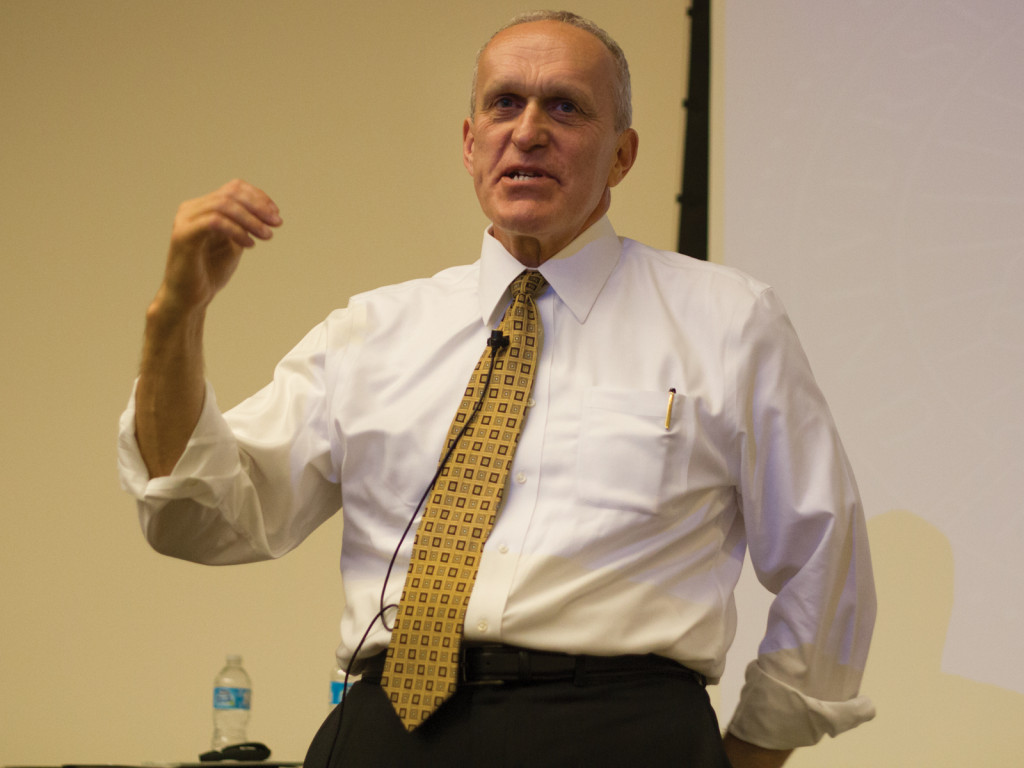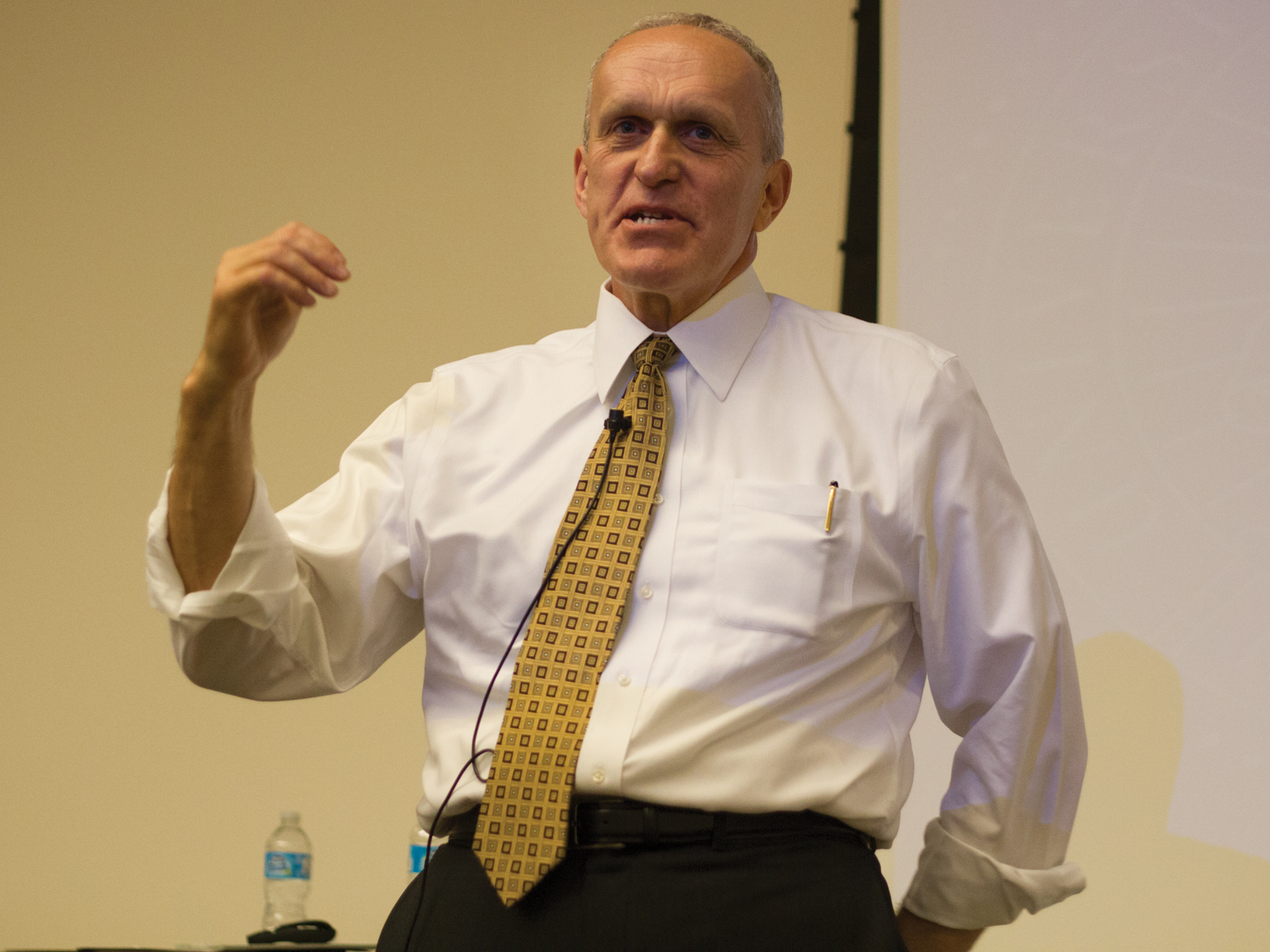
Chancellor Kim Wilcox held the first town hall meeting of the new school year on Wednesday, Oct. 8 to discuss future goals to expand UCR and to air out current student issues such as outcry over the increase in Student Recreation Center (SRC) fees.
In the meeting, Wilcox reinforced his interest in the UCR 2020 strategic plan, a university blueprint to increase the student body to 25,000 students by the year 2020. Wilcox’s take on the plan also includes a goal of adding 300 faculty to UCR’s current 600 faculty within five years and increasing federal grants to students. This plan also seeks to make UCR’s research and citation funding on par with other top public universities either through federal funding or through private gifts and hedge funds.
Wilcox emphasized data that indicates an overall increase in the student population, going from 8,805 students in 1992 to over 20,000 in 2013. The surges of enrollment that occurred in this timeframe set UCR on a trajectory to complete the population portion of the 2020 plan, according to Wilcox. His goals to meet the plan will focus on increasing enrollment for graduate students and nonresident undergraduate students, who have both been historically under-recruited groups.
Wilcox is optimistic about increasing graduation rates, which have stagnated over the last two decades. The percentage of students who finish in four years has consistently hovered at just above 40 percent since 1992, while the percentage of students who graduate at all is only about 67 percent, one of the lowest rates in the UC system. “We should be able to safely predict some increase here as well,” he says.
Despite this, Wilcox was quick to point out that since 1972, there has been a steady increase in the number of minority students who enroll. From 1972 to 1992, the Latino population remained under 10 percent, but now makes up 32.1 percent of the student body. Wilcox points out that all students, regardless of demographic, graduate at the same rates cited above. “Few other universities in the country can say that,” he says, “and none with the kind of diversity that we have.”
Wilcox also addressed concerns from the audience such as the increase in SRC fees. Physics graduate student and head steward of UCR’s student workers union (UAW Local 2865), Jack Pitts, requested that all students the union represents as well as all graduate students be allowed to opt out of the SRC fee. The fee increased from $177 to $624 per year, effectively cutting teaching assistants’ 5 percent raise in half. “It’s more than a month’s rent for me,” Pitts said, referring to the fee increase.
Second-year student Arturo Gomez also voiced his concerns about the SRC fee raises. “I feel that it’s unfair to the students,” he says. He asked Wilcox if he would “push for a cut in administrative pay across the board to keep our tuitions frozen.” Wilcox referred to tuition freezes as “too short-sighted” and stated that he would not support administrative pay cuts.
Undergraduate Rosa Gonzales alleged that there was a lack of student support for the SRC expansion project in its inception in 2010. “(Students) didn’t feel the need to expand the center at the time,” she claimed, and is unhappy that students “are paying $208 per quarter for something that’s nonacademic and that we don’t use.”
About the SRC fee increases, Wilcox pointed out that students cannot opt out of the fee just as people cannot opt out of specific taxes. “I haven’t found (a solution),” he said frankly. “I’m worried about whether or not I can.”








